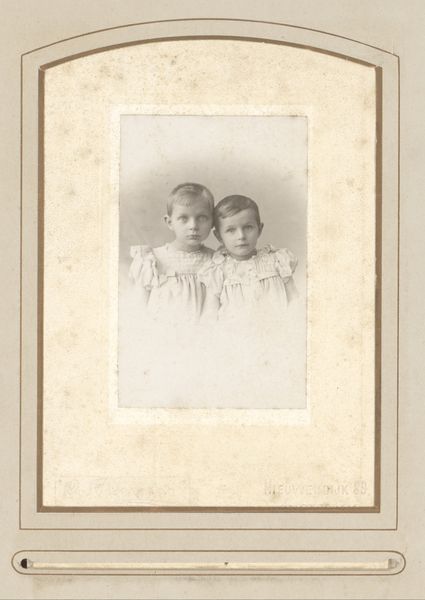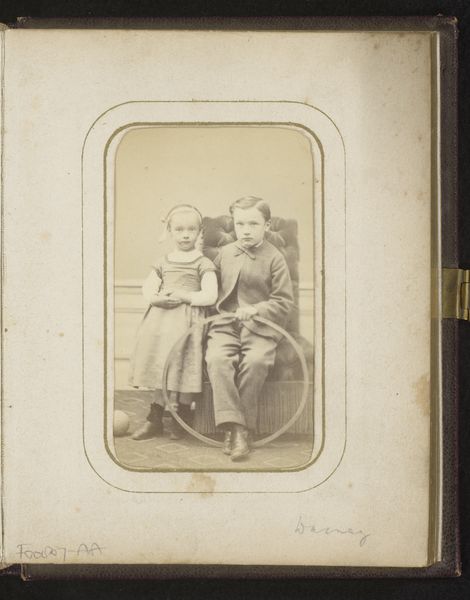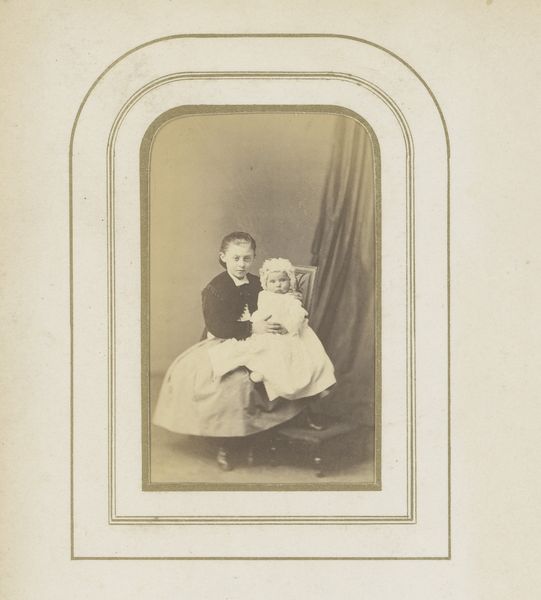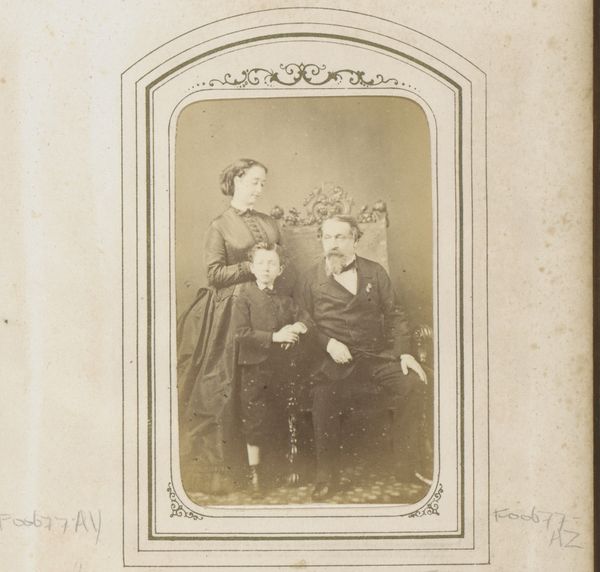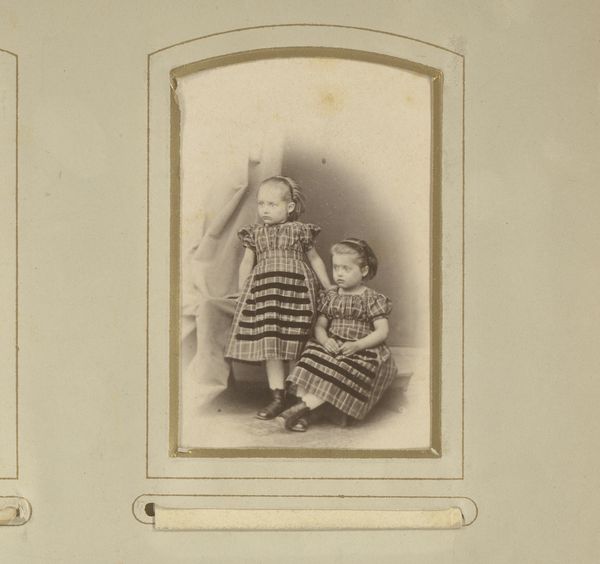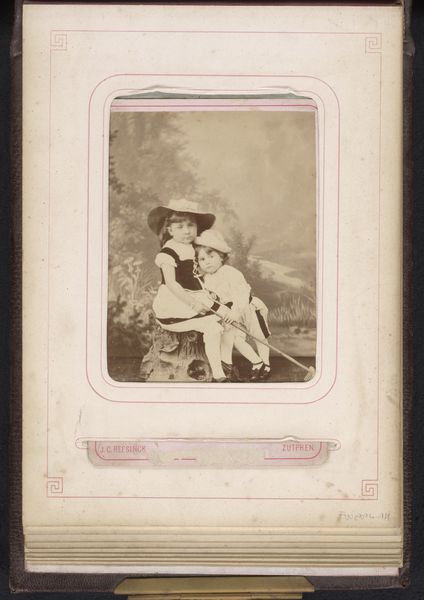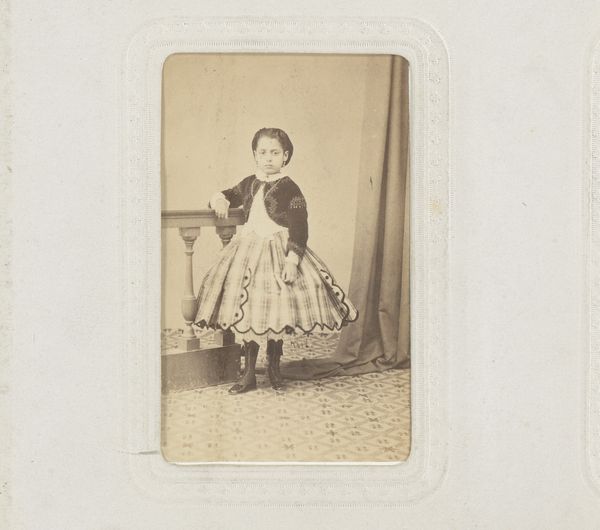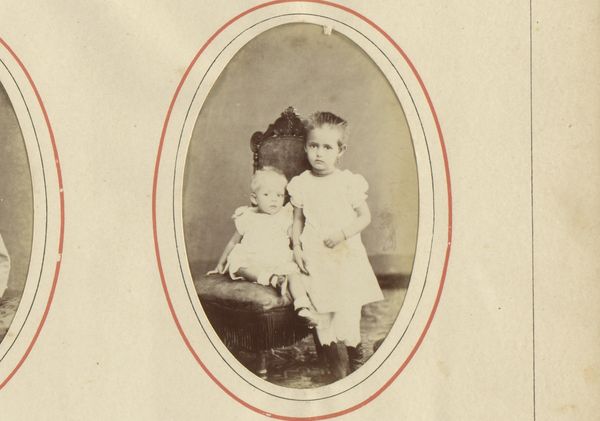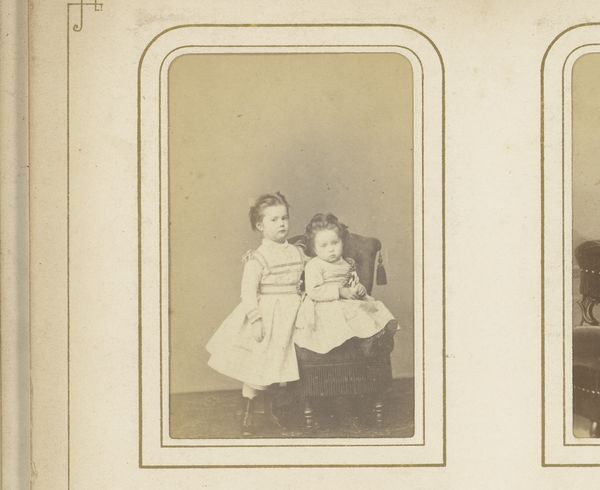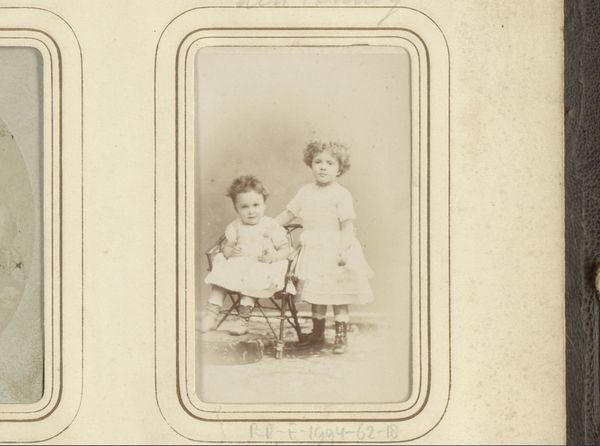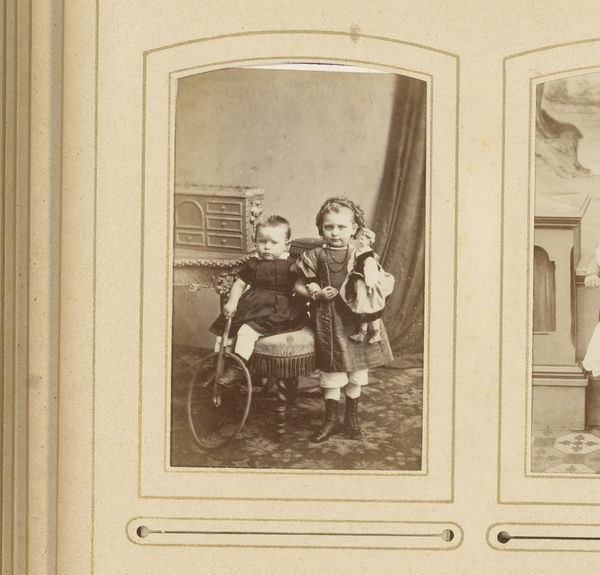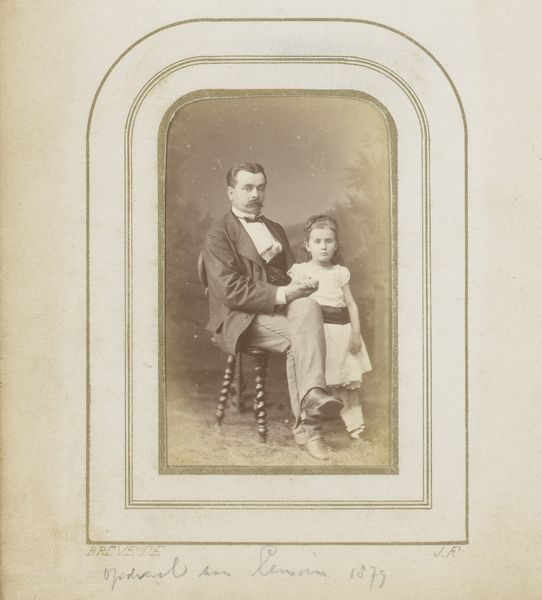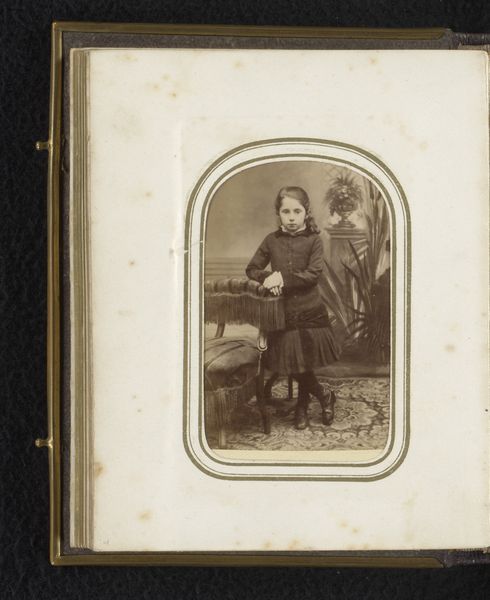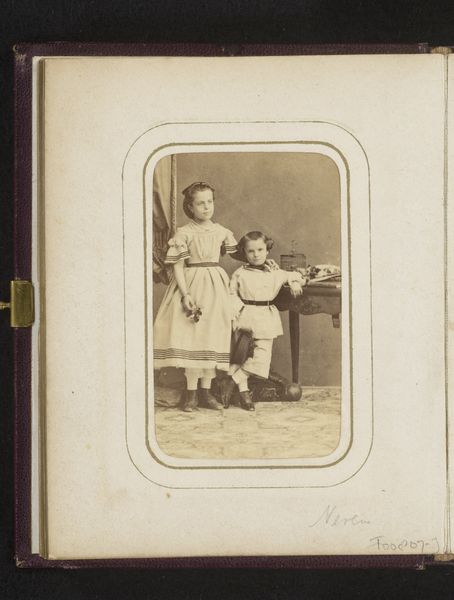
Portret van twee kinderen in een tuindecor, een jongen in een houten kar en een meisje staand ernaast 1883 - 1895
0:00
0:00
photography, gelatin-silver-print
#
portrait
#
pictorialism
#
photography
#
coloured pencil
#
gelatin-silver-print
#
genre-painting
Dimensions: height 167 mm, width 108 mm
Copyright: Rijks Museum: Open Domain
Editor: So this gelatin silver print, dating from around 1883 to 1895, by Franz Reissig, is titled "Portrait of two children in a garden setting". It has a staged feel, a carefully constructed innocence that strikes me. How do you interpret the dynamics at play here? Curator: This staged innocence you mention is crucial. Looking at it through a contemporary lens, we have to consider how children were, and continue to be, constructed as symbols of purity and innocence. Reissig, through this composition, is participating in a specific construction of childhood tied to social expectations and control. What power dynamics are subtly present do you think? Editor: Well, there’s a clear difference in attire, right? One child, likely a girl, is in a relatively simple dress in the cart, while the other is in a more elaborate striped dress. Maybe that speaks to a social stratification even within childhood? Curator: Exactly! Consider the performativity involved. Children's clothing during this era was laden with meaning. It can also signify a certain class identity being consciously constructed through visual representation. This makes the photograph an artifact of social class. But is this a ‘true’ representation of these children? Editor: It feels more like an idealized performance, one dictated by the adult world. That makes me wonder about the subjects' agency in their portrayal, or lack thereof. I now realize the setting as ‘natural’ is also manufactured! Curator: Precisely! We can dig into how gardens themselves, even in photography, represented control of the natural world, reflecting humanity's aspirations for dominance. Do you see how such photographs reinforced certain values, class structures and ways of perceiving innocence? Editor: I hadn't fully grasped that before! Now it is apparent that even within what appears a simple family portrait there is embedded context surrounding gender, social standing, and even how we define and then photograph childhood itself. Curator: Yes, reflecting upon this kind of critical analysis certainly allows us to engage more meaningfully with the historical narrative being constructed in art.
Comments
No comments
Be the first to comment and join the conversation on the ultimate creative platform.
